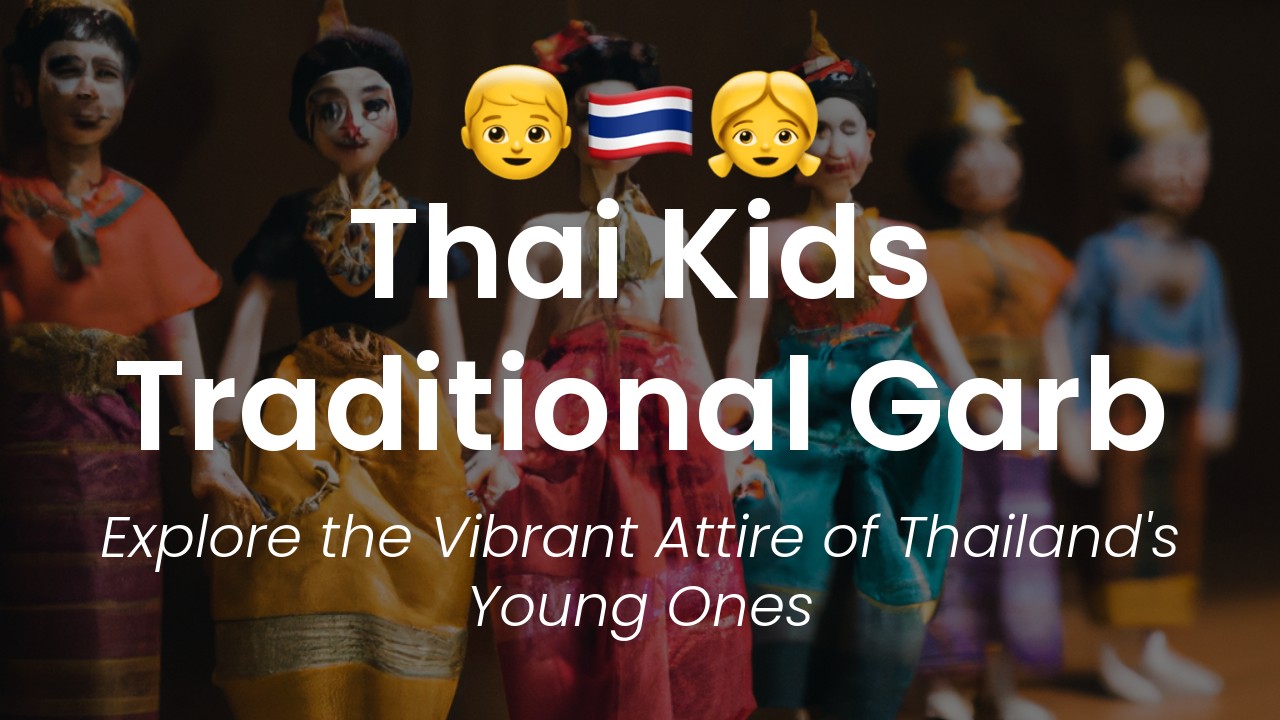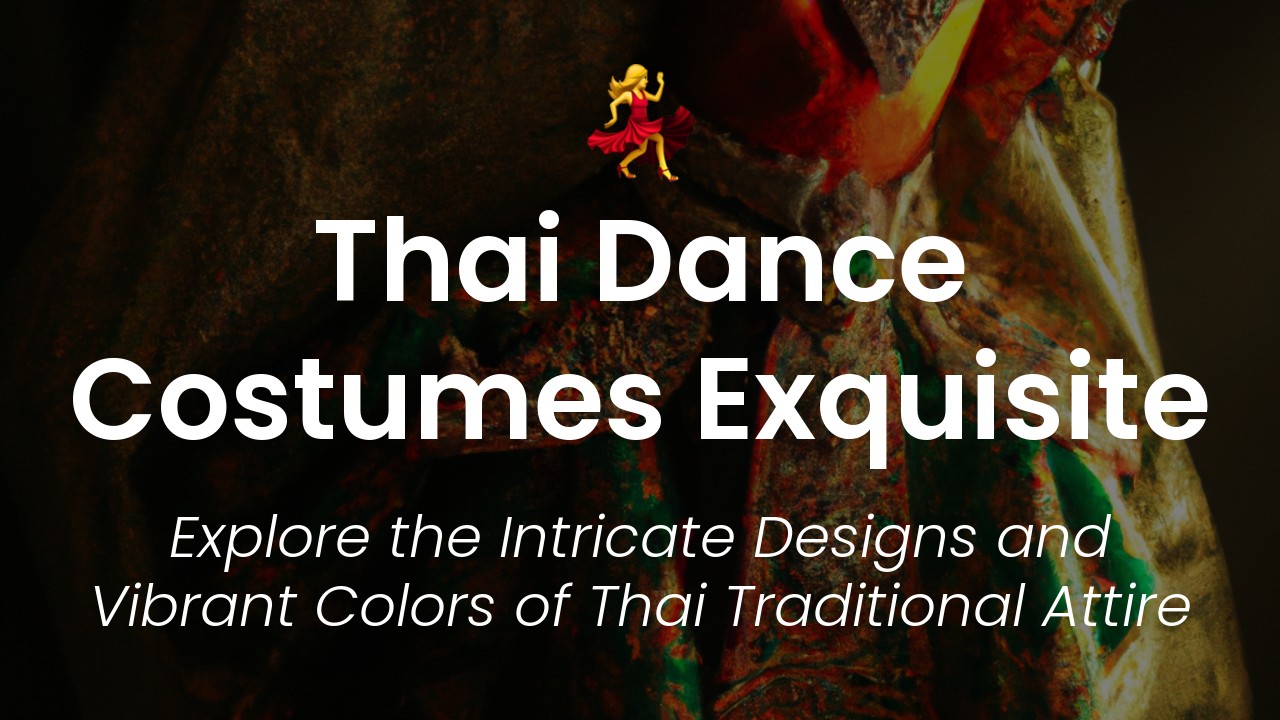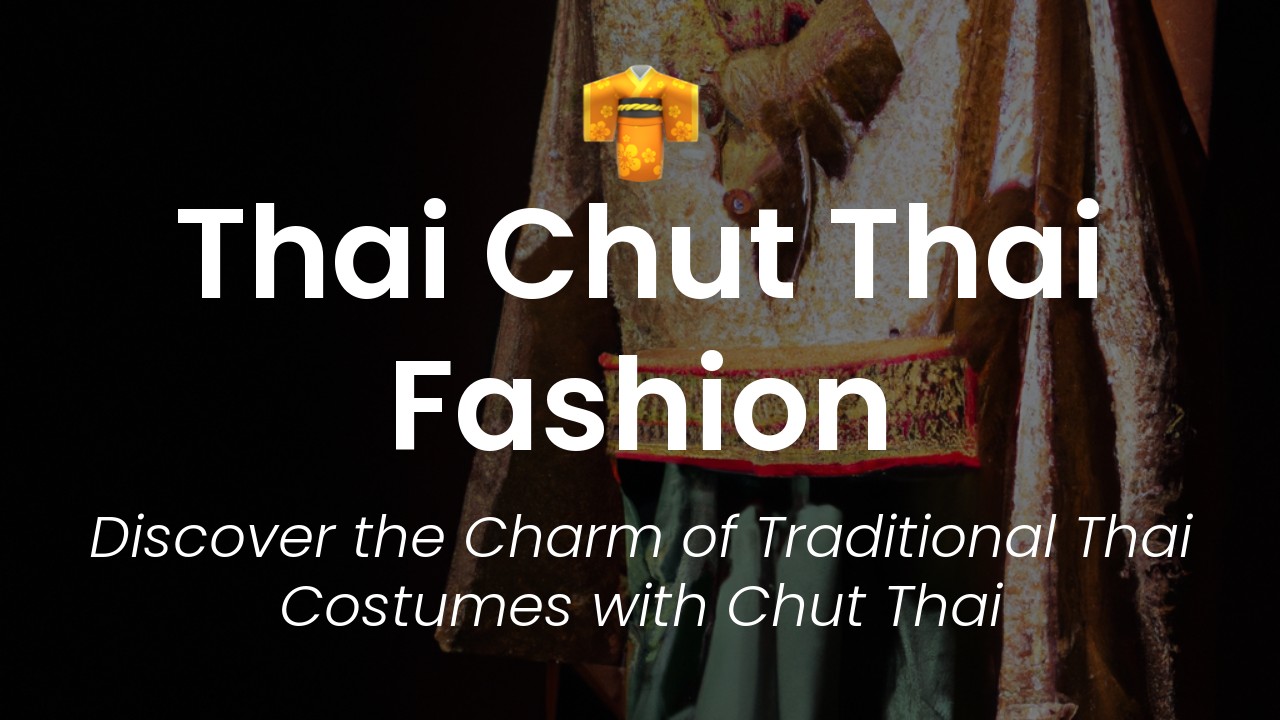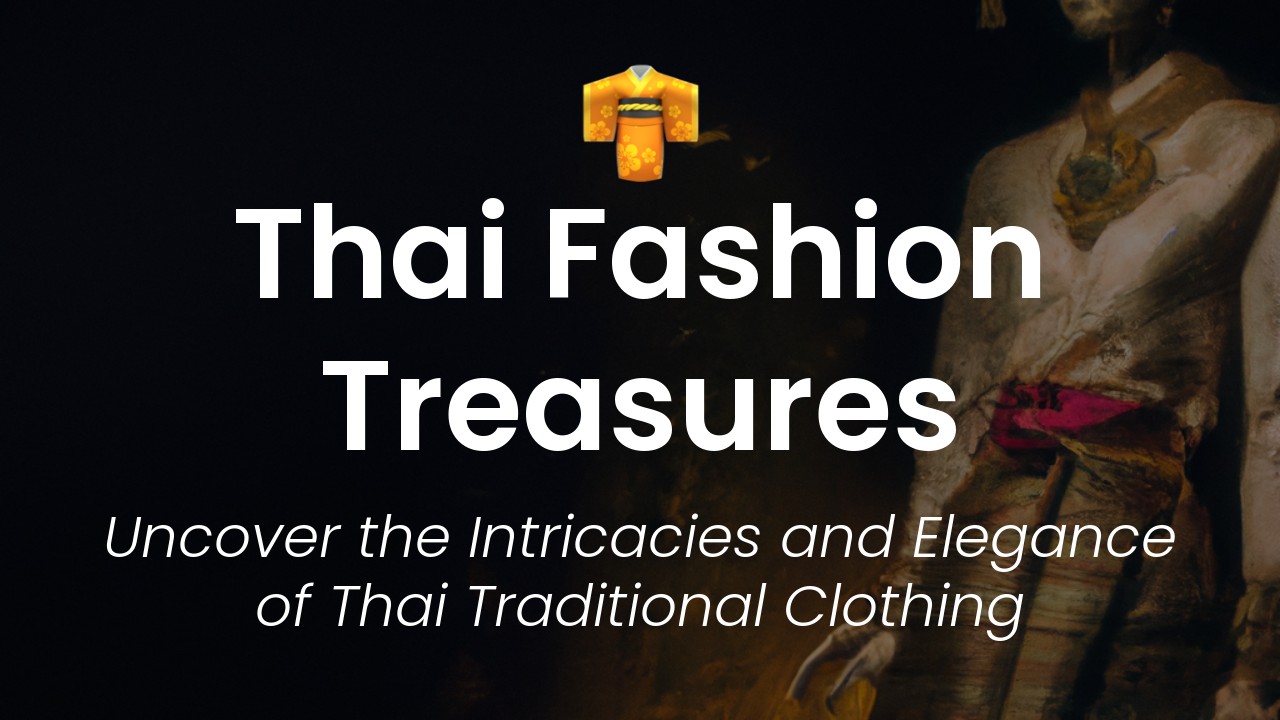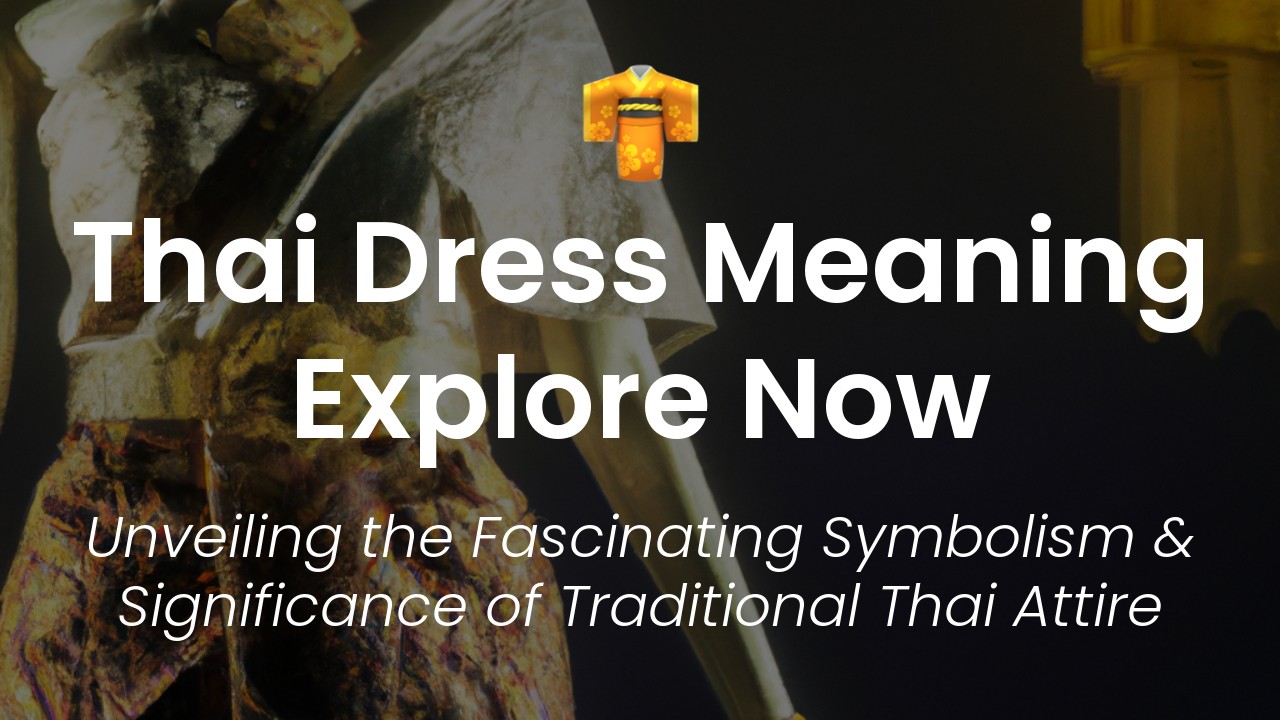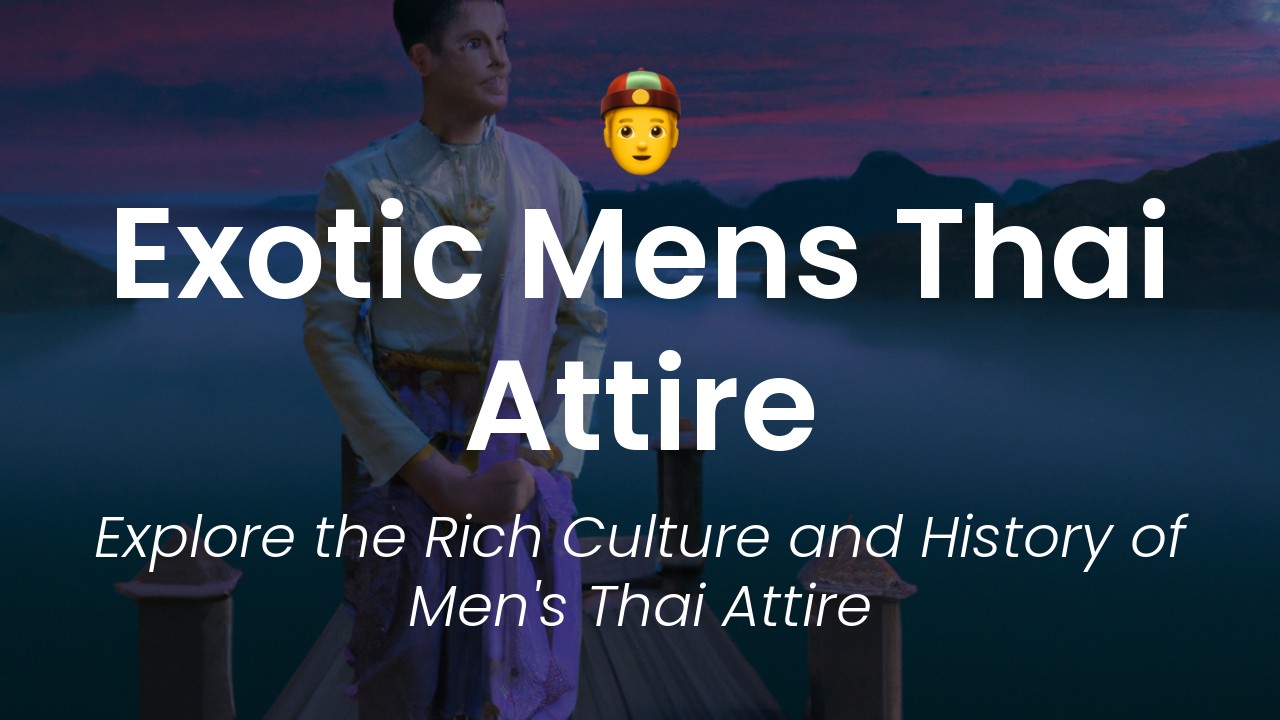As kids, we all had our own unique style that made us stand out from the rest of the crowd. But have you ever wondered what Thai kids wear when they want to look their best? The colorful world of Thai kids' traditional garb is truly a sight to behold.
For centuries, Thai culture has been world-renowned for its colorful and intricate designs, from the mesmerizing handwoven silk sarongs to the striking gold and silver accessories adorning the bodies of Thai brides. But these vibrant designs are not limited to adults – the Thai tradition of dressing kids in intricate outfits is a sight to behold.
In Thailand, traditional clothing is not just reserved for special events like wedding ceremonies or temple visits. It's a way of life, a reflection of the country's rich heritage and culture. Thai parents dress their little ones in the most stunning array of traditional garments, making sure that their kids are stylish, comfortable, and culturally connected. So, join me today as we explore the wonderful and colorful world of Thai kids' traditional garb!
Rich History and Cultural Influences
Traditional clothing has always played an important role in Thai culture, and it continues to do so until today. Throughout Thailand's rich history, local people have always had traditional outfits that were unique to their own ethnic group. These clothing styles were influenced not only by local customs but also by neighboring countries such as China, India, and Cambodia.
Thai traditional clothing has functional and symbolic purposes that reflect the social class, gender, age, and occasion of the wearer. Clothing is not only a necessity but also a way to express identity, status, and beliefs. It can signify family heritage, religious values, regional pride, and national identity.
Thai Boys' Traditional Garb
Thai boys' traditional clothing varies depending on the occasion, region, and family background. In general, a young boy's traditional outfit consists of a simple cotton shirt, shorts or pants, and a type of wrap called a "phaa biang" or "sabaan phaa." The "phaa biang" is a rectangular length of fabric that is wrapped around the waist and tied in the front. The "sabaan phaa" is a more elaborate type of wrap that involves folding and tucking the extra fabric to create a pleated effect.
Boys may also wear sleeveless or short-sleeved jackets called "suea phaa" or "suea krabi" over their shirts. These jackets are usually made of brightly colored silk or cotton, with intricate patterns and embroideries.
In formal occasions such as weddings, ceremonies, or festivals, boys may wear more elaborate outfits such as "chut thai chitlada" or "chut thai phra ratcha niyom." These outfits are inspired by the royal court dress of the late 19th and early 20th century and include a long-sleeved jacket, pants, a sash, a headdress, and sometimes a cape.
Adorable and Fashionable Thai Girls' Clothing
Thai girls' traditional clothing is perhaps more diverse and colorful than boys' clothing, with various styles and designs that reflect the different regions and customs of Thailand. Girls' clothes are generally more feminine, with softer fabrics, more frills, and more accessories.
A typical Thai girl's outfit consists of a blouse, a skirt, and a type of scarf or shawl called a "sabai." The blouse is usually tight-fitting, with short or long sleeves, and comes in different patterns and colors. The skirt can be either long or short, with different layers, pleats, and embroideries. The "sabai" is a rectangular piece of fabric that is draped over the shoulders and can be tied in different ways to create different styles.
Girls may also wear accessories such as bracelets, anklets, necklaces, earrings, and hair ornaments. These accessories are usually made of gold, silver, or precious stones and can signify the social status and wealth of the wearer.
Fabrics, Patterns, and Embroideries
Thai traditional clothing is known for its vibrant colors, intricate patterns, and delicate embroideries. The fabrics used for traditional clothing range from simple cotton to luxurious silk, with different textures and finishes such as brocade, satin, or jacquard.
The patterns and motifs used in Thai traditional clothing are inspired by nature, mythology, and local tales. Common themes include flowers, animals, mythical creatures, and Buddhist symbols. For example, the "ngob" pattern represents the nine gods of luck, while the "lai thai" pattern represents the waves of the sea.
Embroideries are also an important part of Thai traditional clothing, especially for formal occasions. Embroideries can be made of different materials such as silk thread, gold or silver thread, or sometimes even real gold or silver. Common embroidery techniques include cross-stitch, chain-stitch, and couching.
Occasions and Celebrations for Wearing Traditional Garb
Thai traditional clothing is still worn on special occasions and celebrations such as weddings, funerals, festivals, and religious ceremonies. It is not only a way to show respect for tradition and culture but also a way to create a sense of community and belonging.
For example, during the Songkran festival (Thai New Year), people wear traditional clothing and participate in parades and cultural events. During Loy Krathong (Festival of Lights), people wear traditional clothes and release floating lanterns onto the water.
Weddings are also a popular occasion for wearing traditional clothing, with different styles and colors depending on the region and the ethnicity of the bride and groom. In some cases, the whole wedding party may wear coordinated traditional outfits that reflect the theme and style of the wedding.
Modern Twist and Sustainability in Thai Fashion
While traditional clothing is still cherished and celebrated in Thailand, modern fashion trends have also influenced Thai designers and consumers. Nowadays, there are many designers who incorporate traditional elements into their collections and create modern, fashionable, and sustainable outfits.
For example, some designers use recycled or eco-friendly fabrics and combine traditional patterns and motifs with modern cuts and styles. Others experiment with new textures, color combinations, and embellishments to create unique and edgy looks that still reflect Thai culture and identity.
In conclusion, Thai traditional clothing is a rich and colorful part of Thai culture that continues to inspire and fascinate people all over the world. Whether you are a tourist, a fashion lover, or a local, exploring the world of Thai traditional clothing can be an enriching and rewarding experience that connects you to the beauty, history, and diversity of Thailand.

